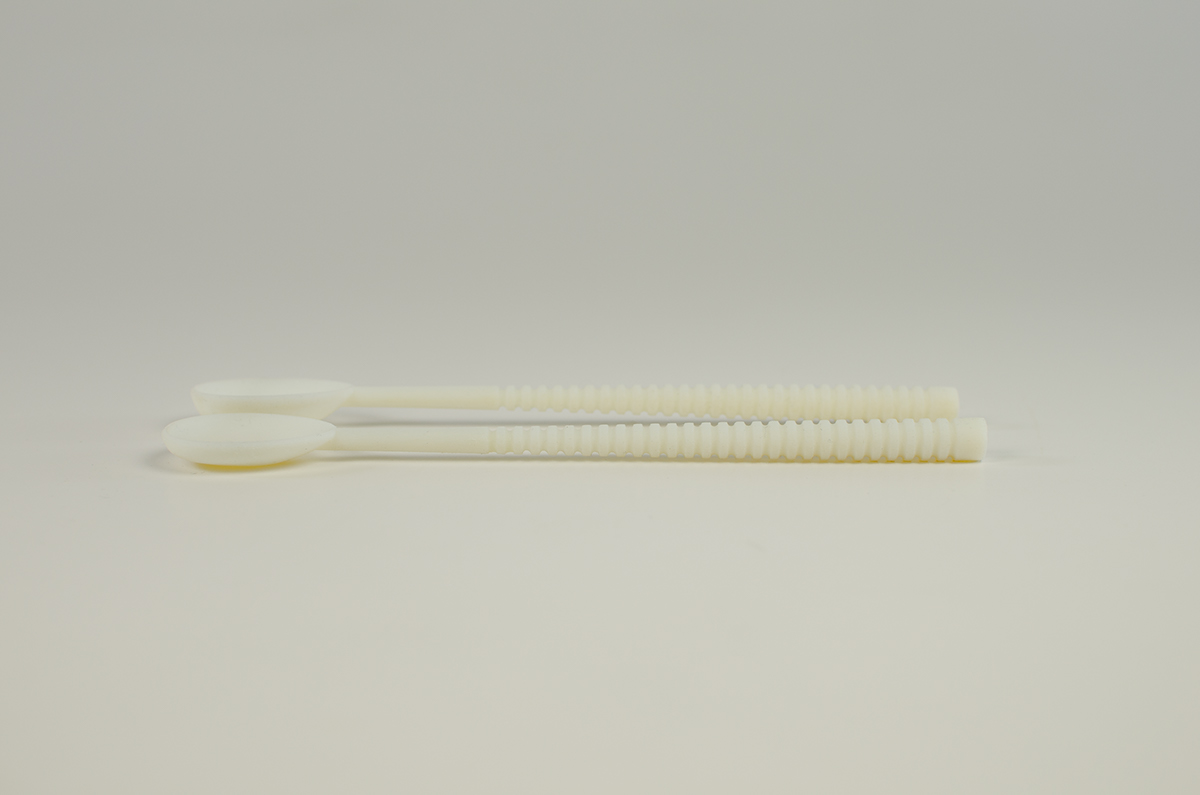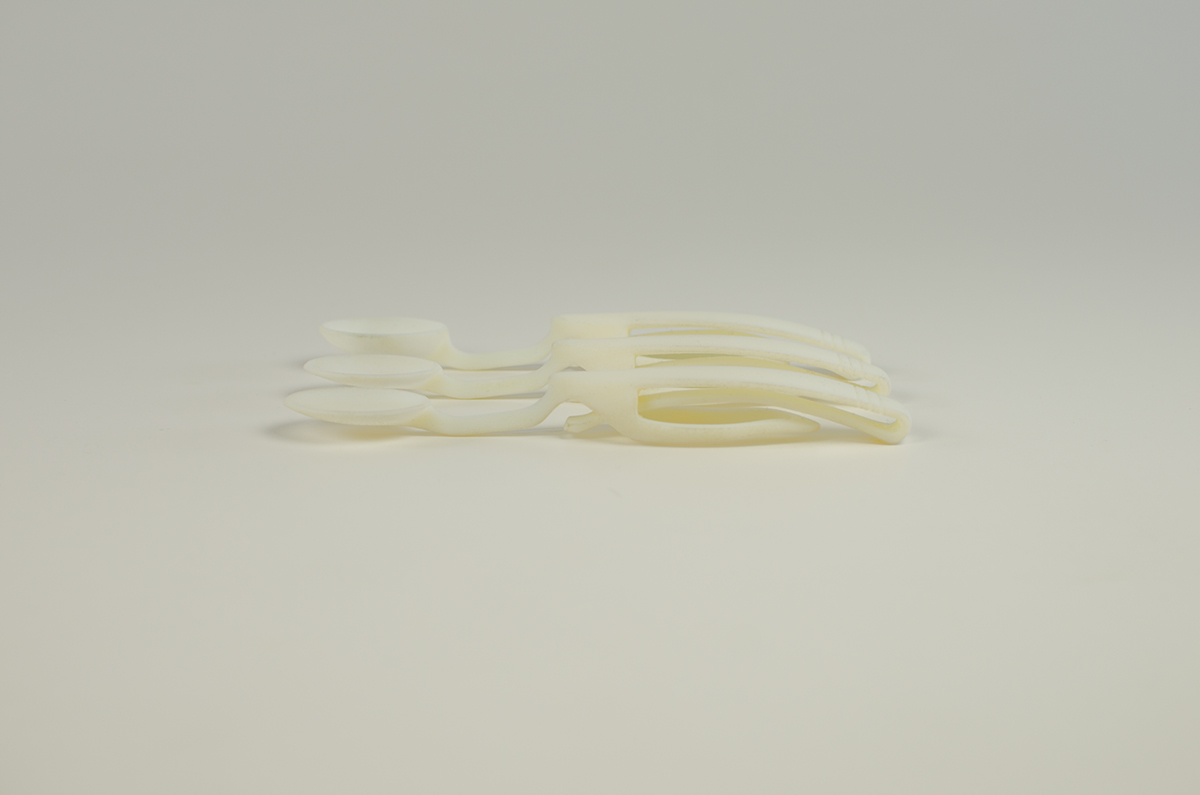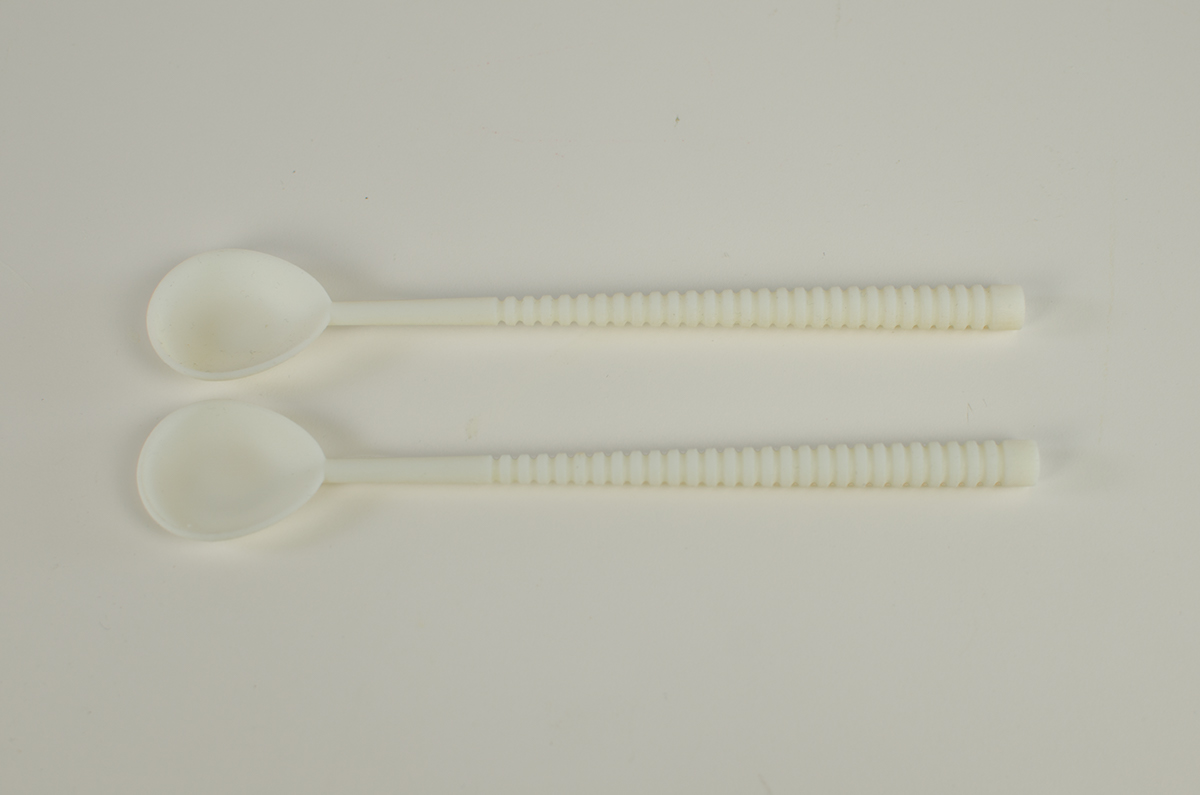
The Byte Glossectomy Spoons were created in conjunction with the iRSM (Institute for Reconstructive Sciences in Medicine) at the Misericordia hospital for patients with difficulties eating due to surgery or various facial defects.
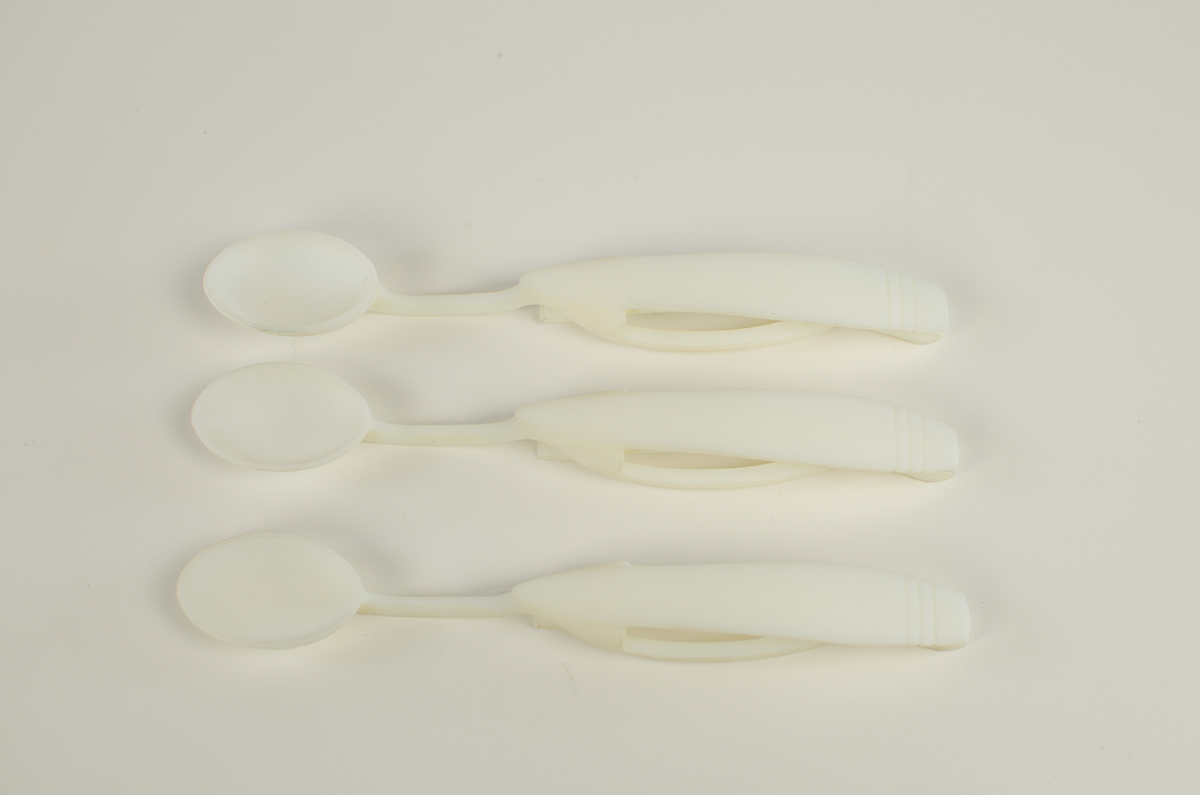
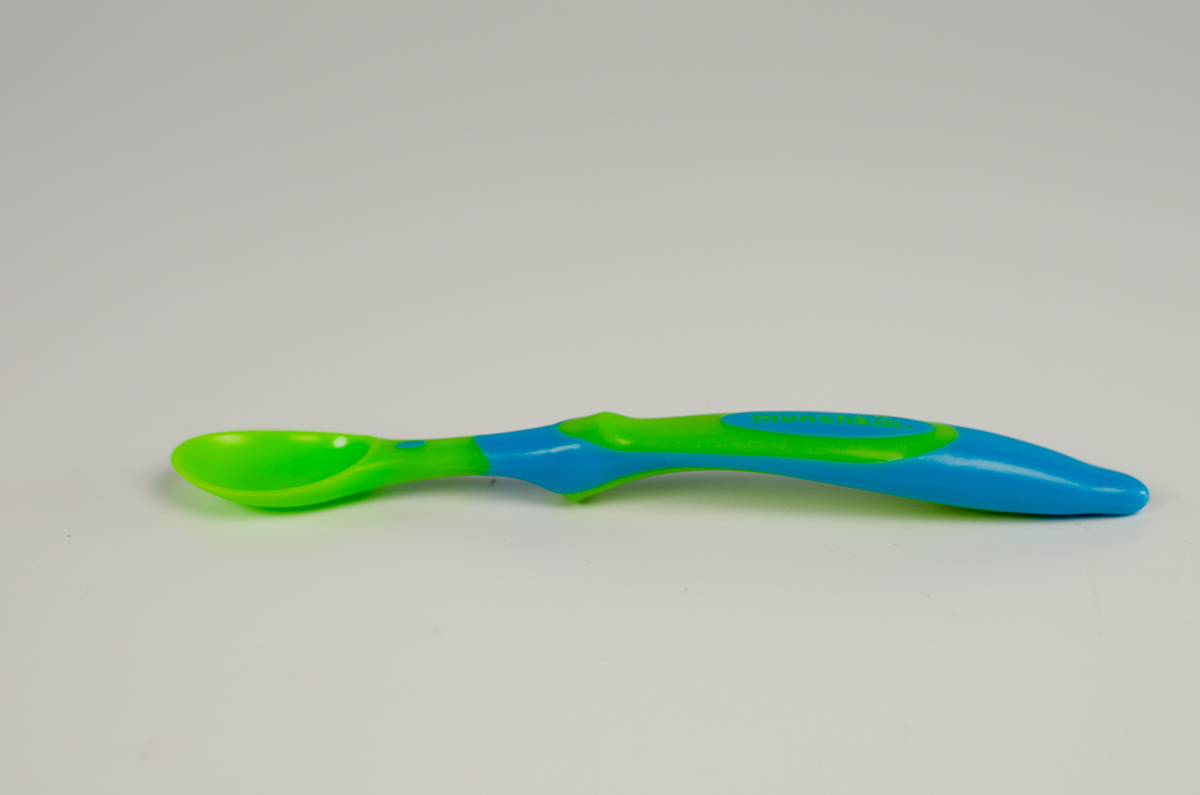
The problem patients were facing was due to surgery or facial defects, they could not use standard cutlery to eat, as they are usually too large, not long enough or made of materials which react with the patient's saliva. Because of this, many patients were forced to use cutlery created for children or ugly and unweildy 'therapeutic' pieces, all of which draw undue attention to the user- one who is already very self conscious about their appearance due to their facial defects.
Our goal was to design cutlery pieces which can be easily used by the patients, in addition to being attractive and discrete.
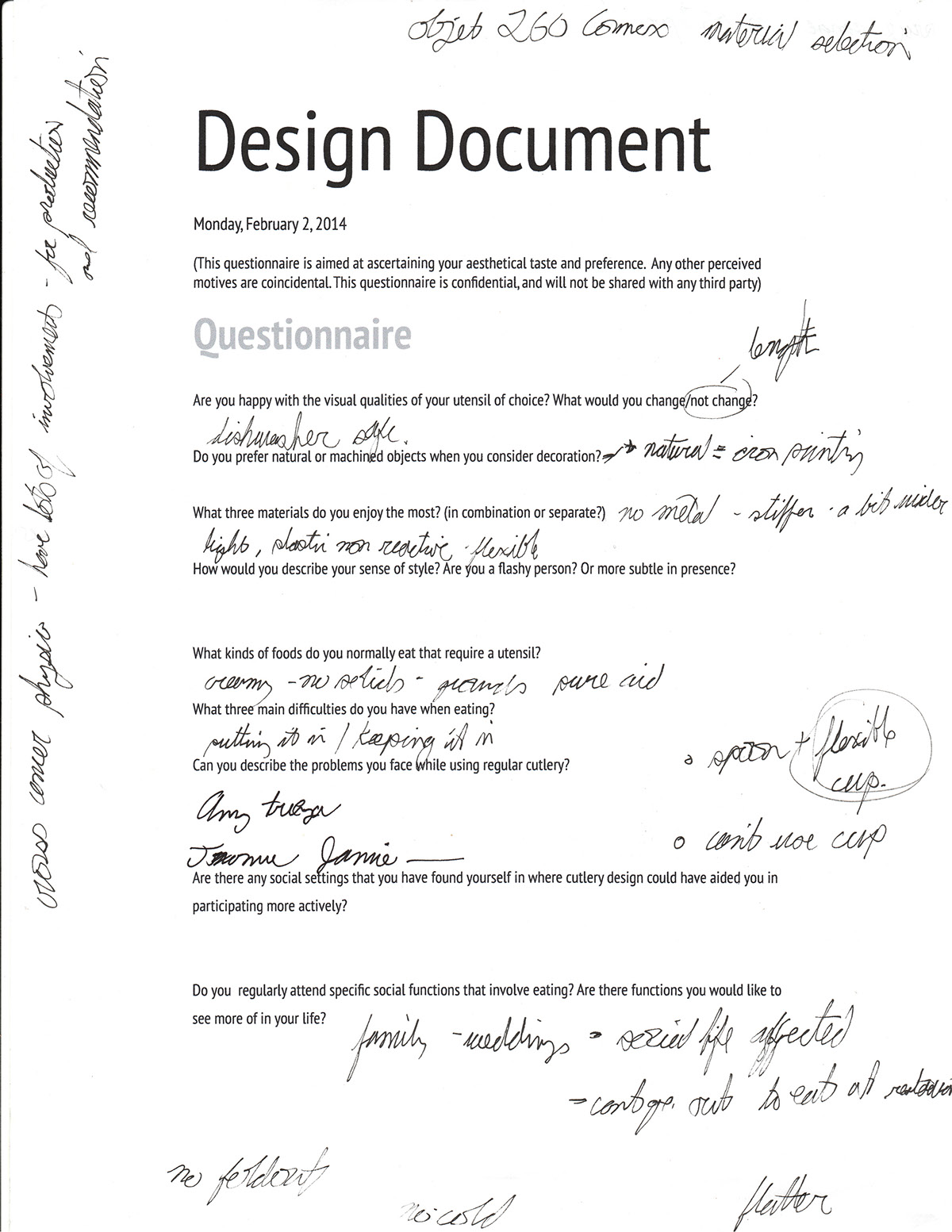
We were fortunate to be able to work with a patient who had undergone surgery for facial cancer, and was able to give us excellent feedback on our work. We gave her a questionaire on the types of issues she was facing, and what would require more attention to in our designs.
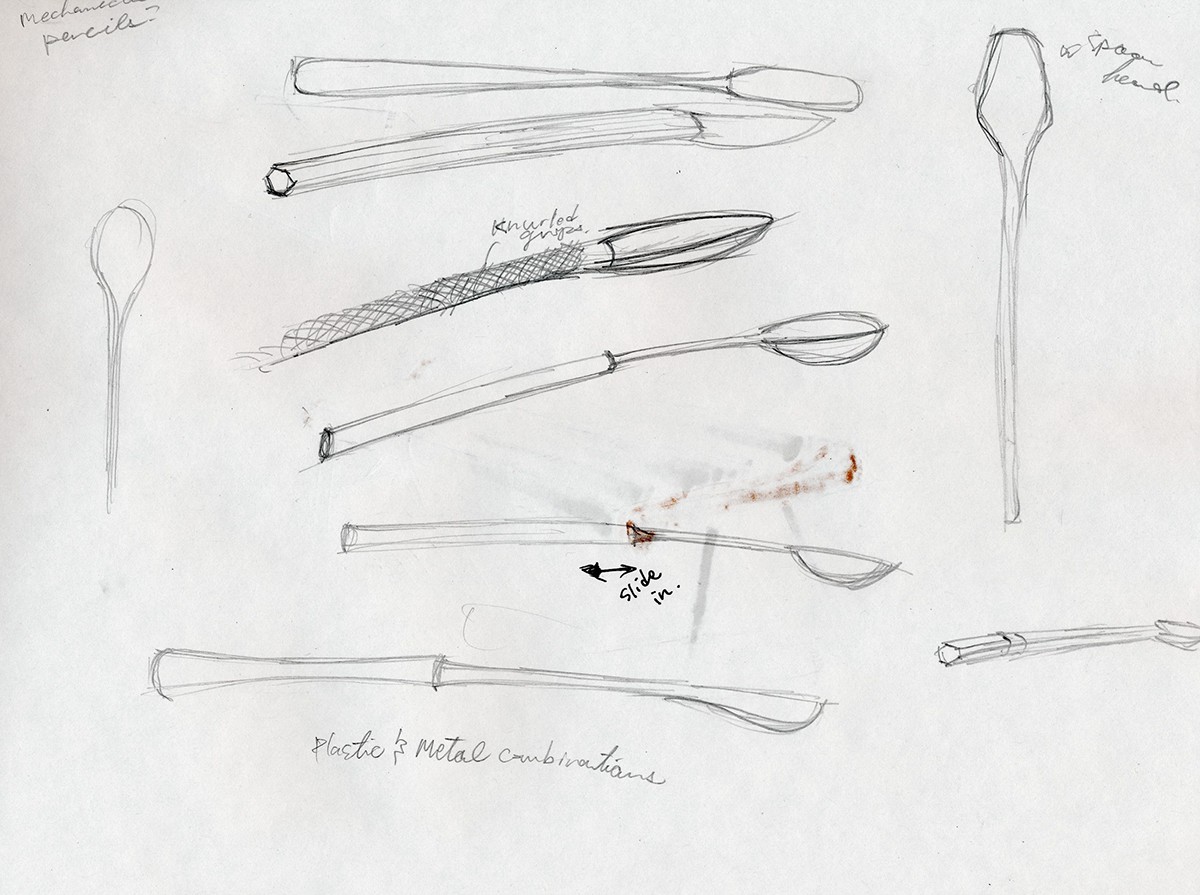
As many patients often have trouble chewing, much of their food is often pureed or in liquid form, making spoons the tool of choice when eating. In addition, patients often require a longer handle and shallower head on their spoons, as their lack of regular mouth motions force them to use different methods when eating, namely rotating the spoon to pour the food down their throat.
We explored several different handles, shapes and finishes, evaluating their potential and practicality before proceeding to CAD models and renders.
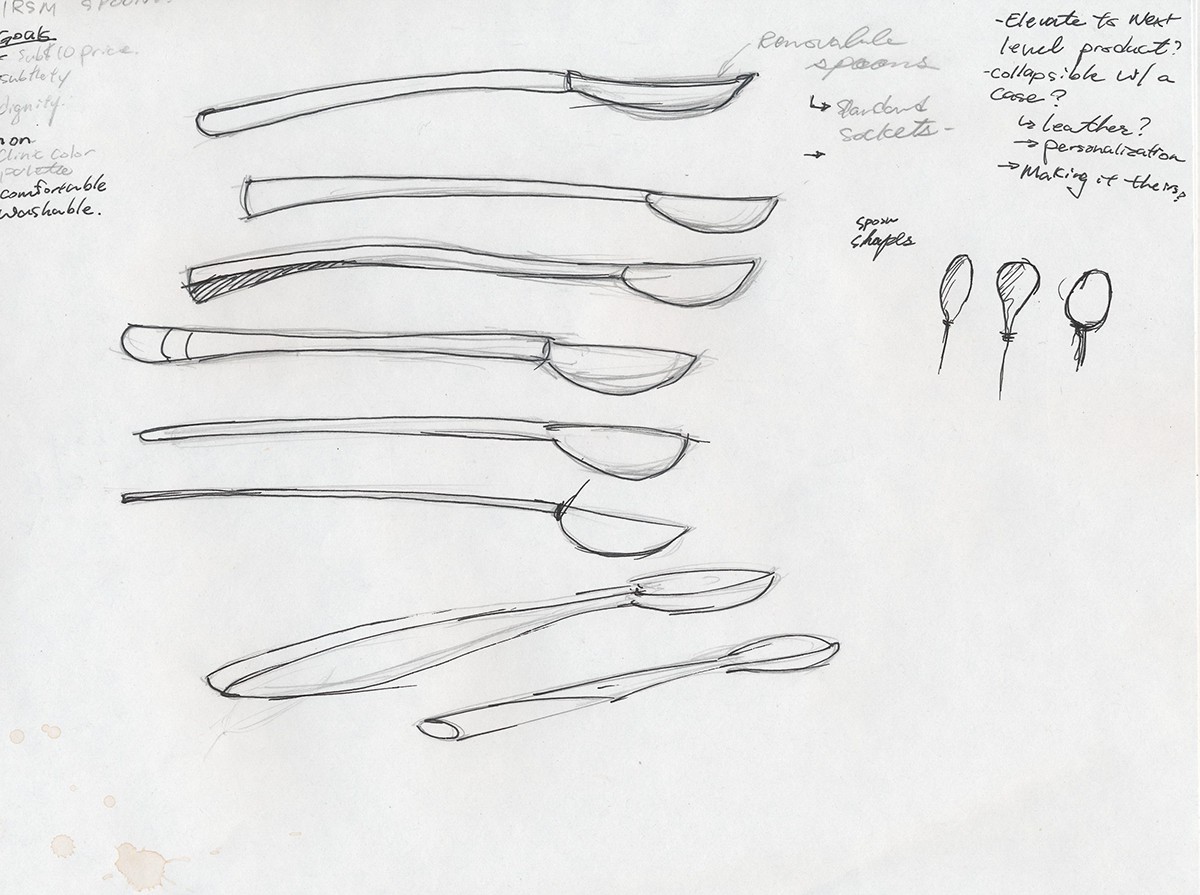
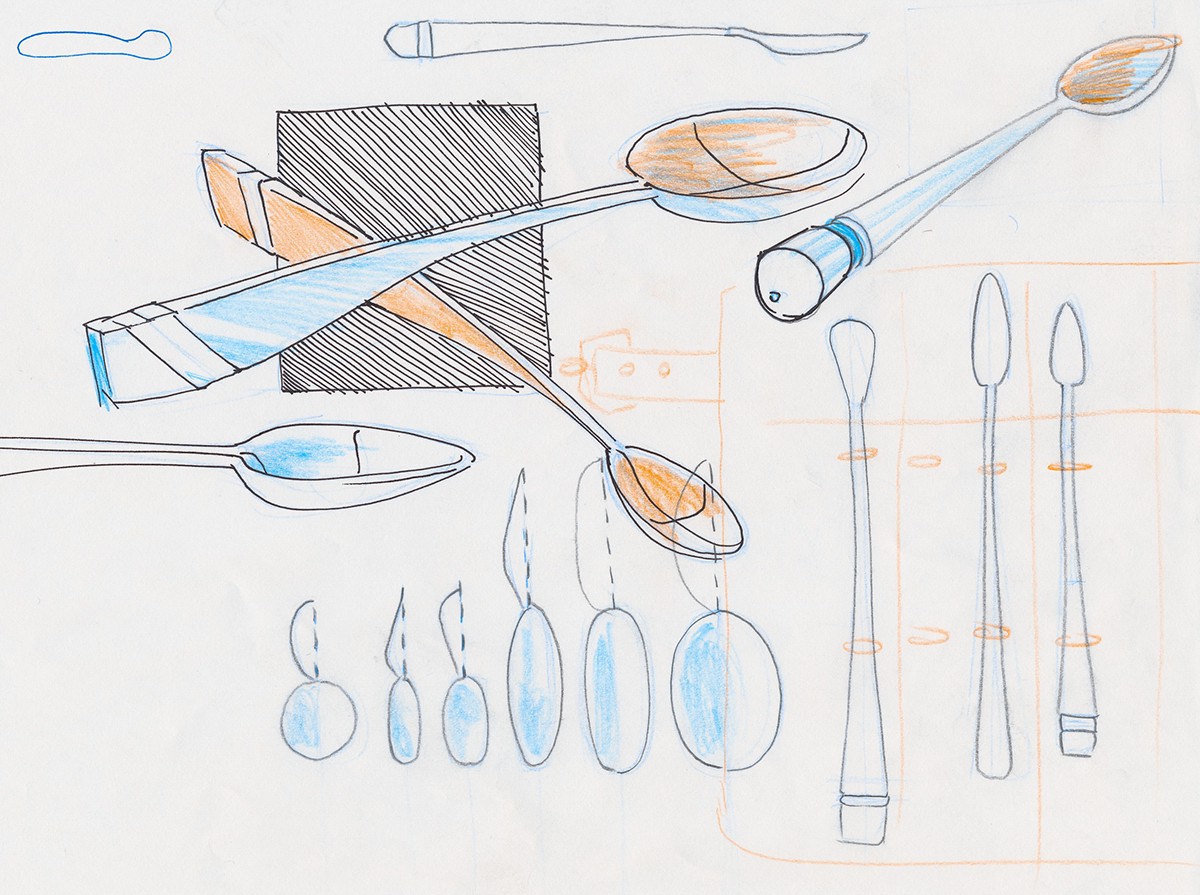
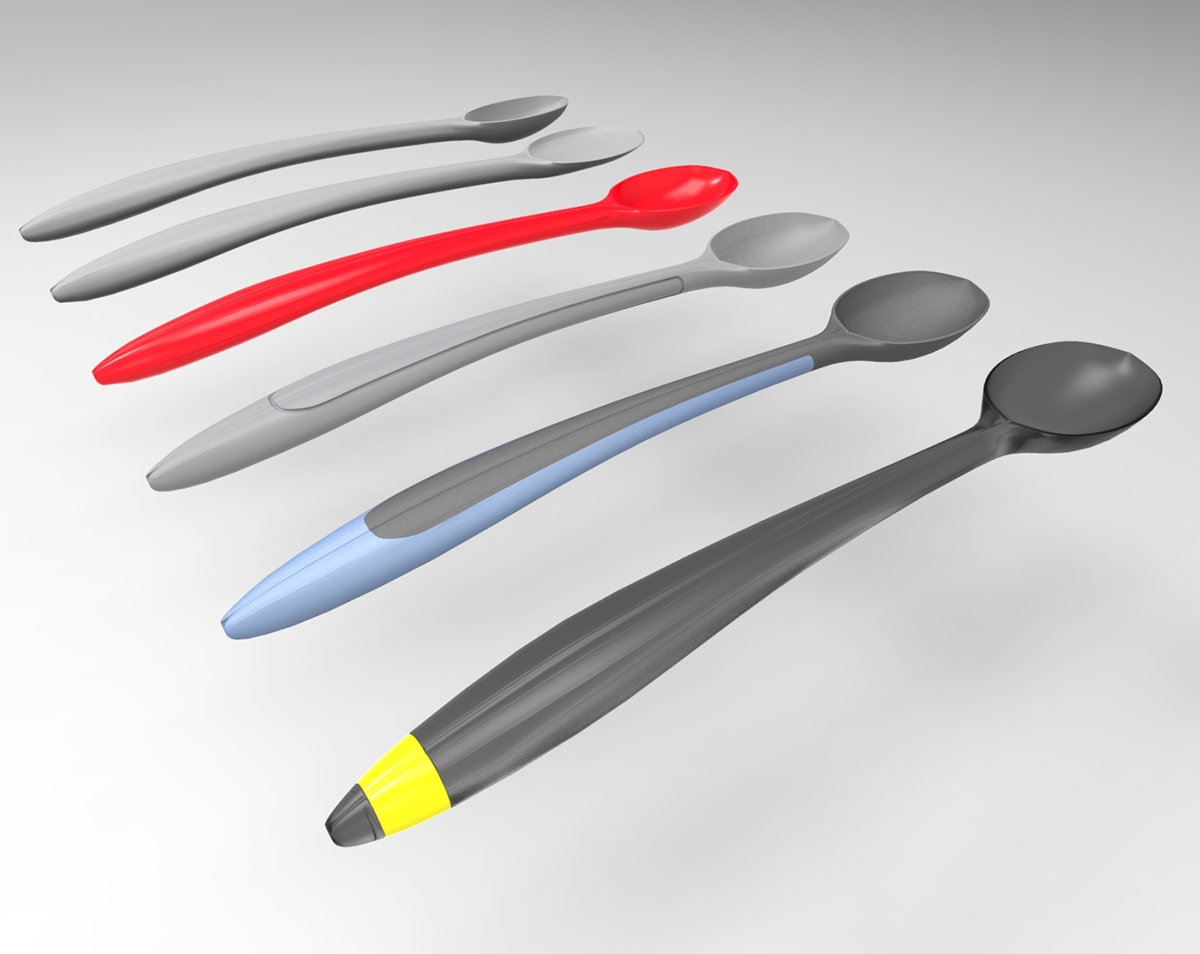
CAD models and renders allowed us to more fully realize our ideas, with the simulation of different colors, material and material choices, along with more realized dimensions.
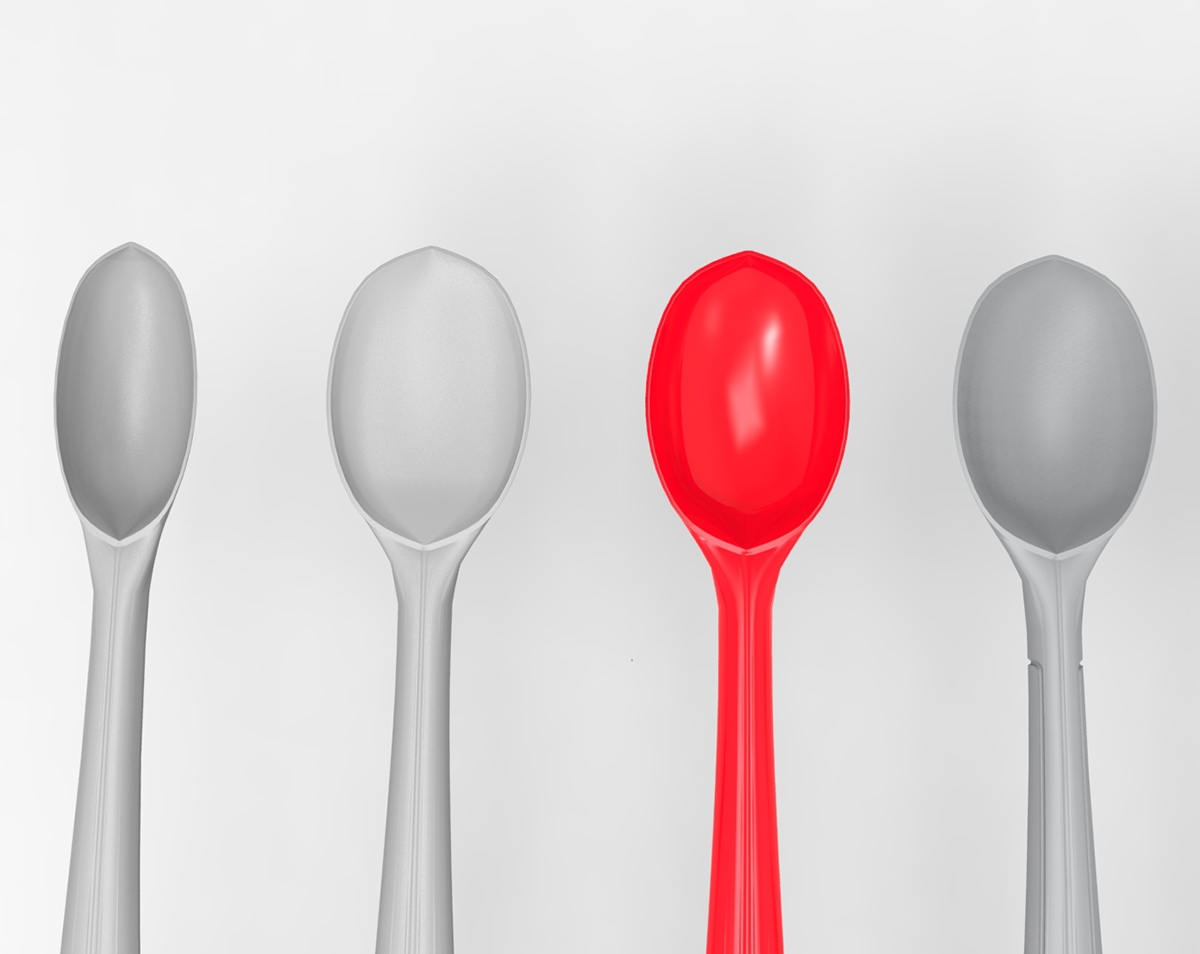
Multiple sizes of the spoon head were explored to find the best balance between length, width and depth.
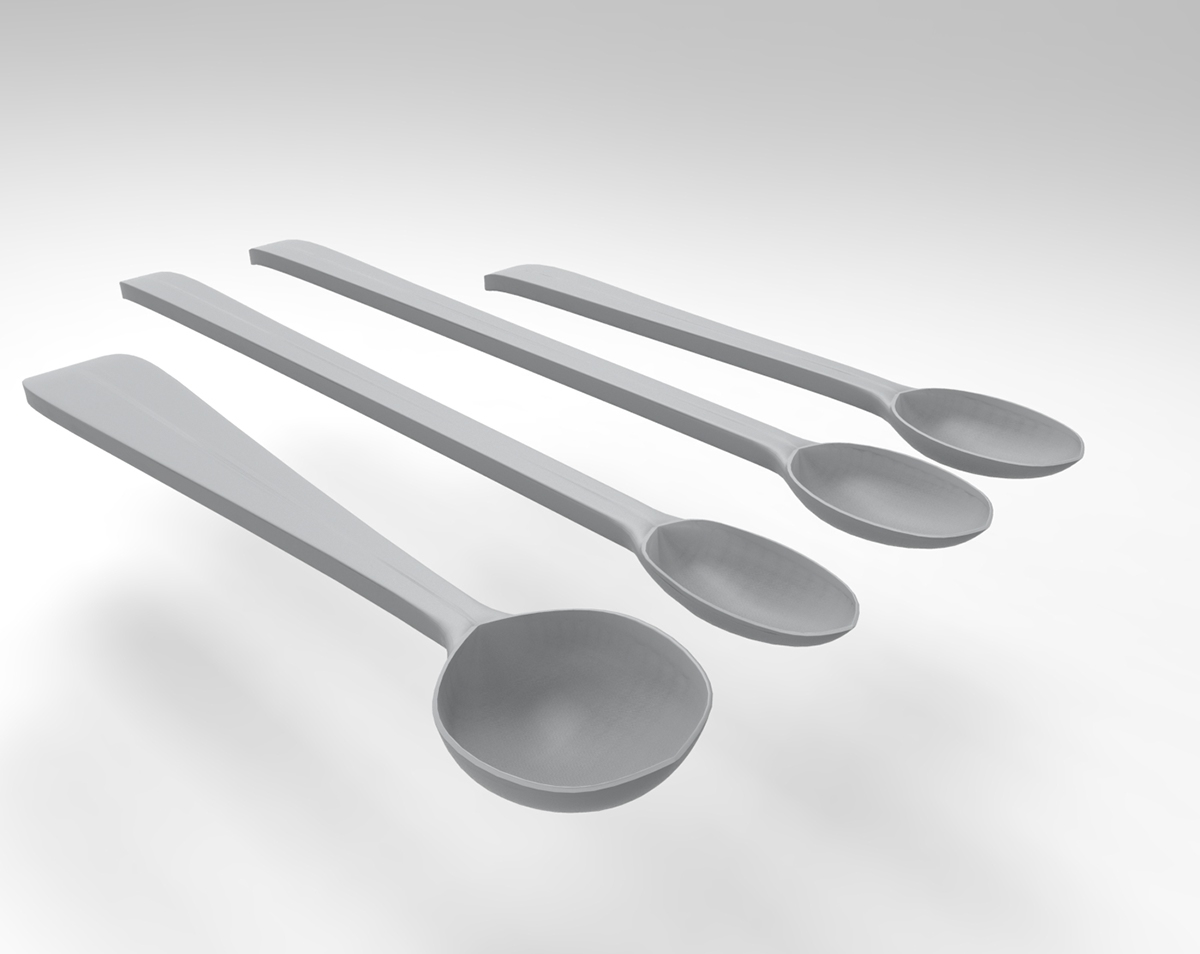
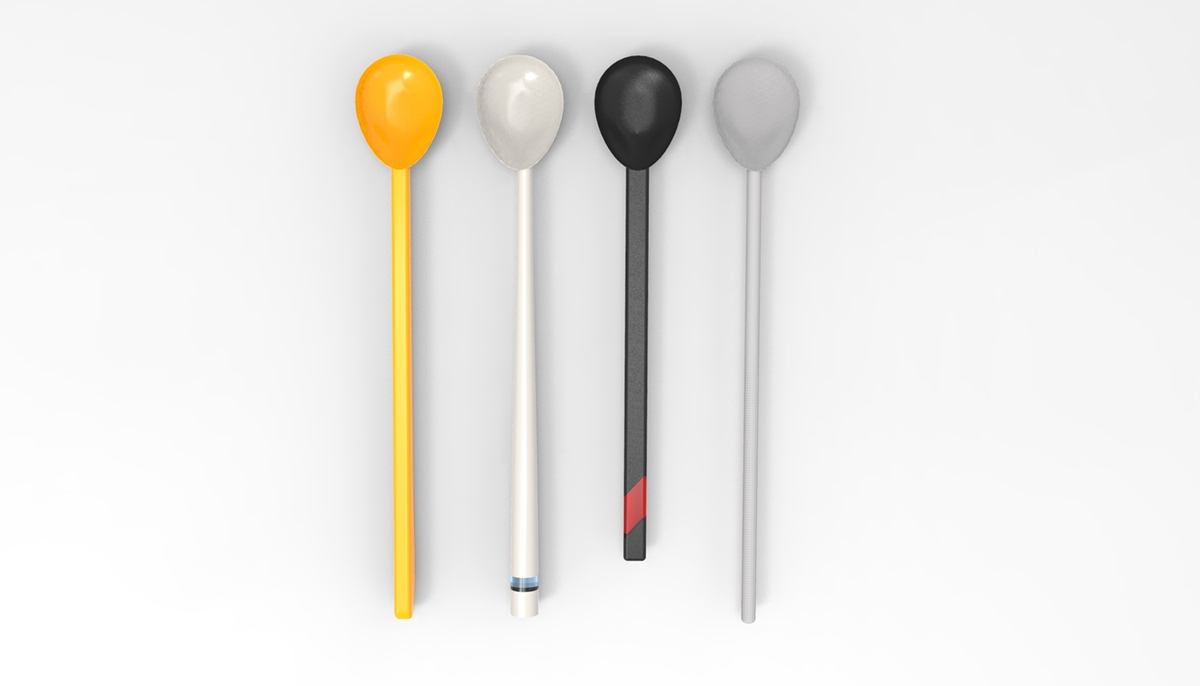
Several different aesthetics, shapes and color choices were explored.
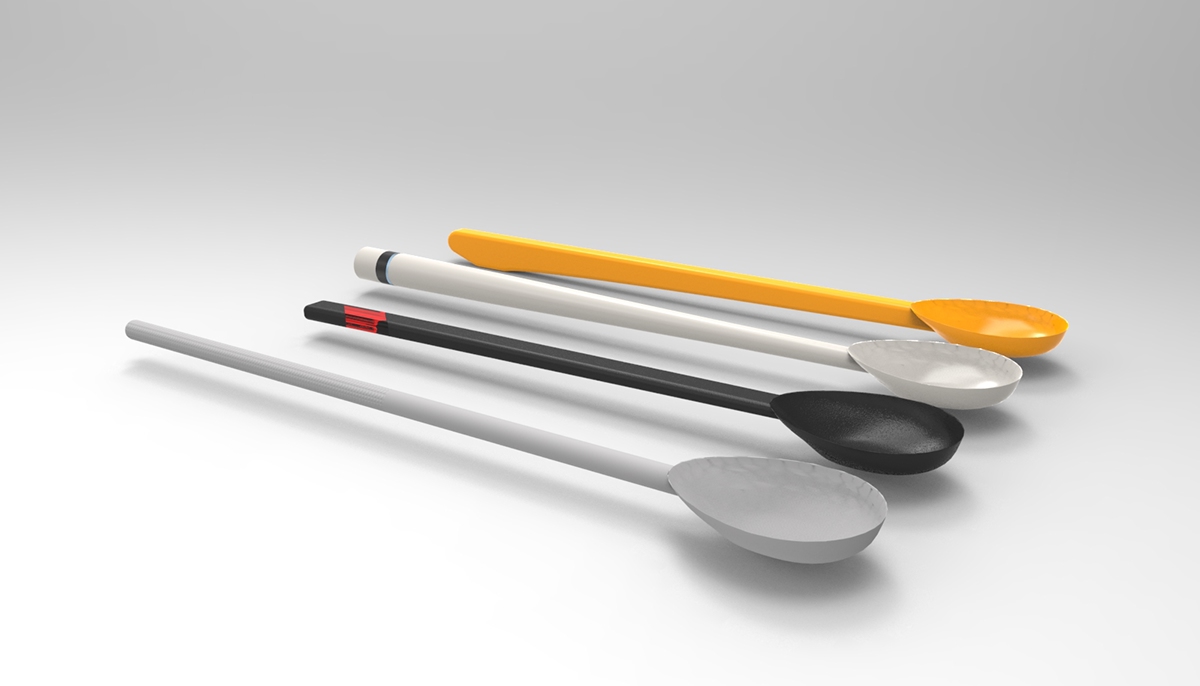
Our prototypes were printed on a Connex 260 3D printer.

A progression of our prototypes, with the original children's spoon on the left, and our final designs on the right.

For our prototypes, we ended with two designs, with one focussing mainly on practical use of the spoon, and the other focusing on aesthetics. However, both have several features in common
The design shown above features a long handle, with two depths on the spoon head- one with a shallower depth for solids and the other with a slightly deeper one for liquids. It also features a ribbed design for better grip.
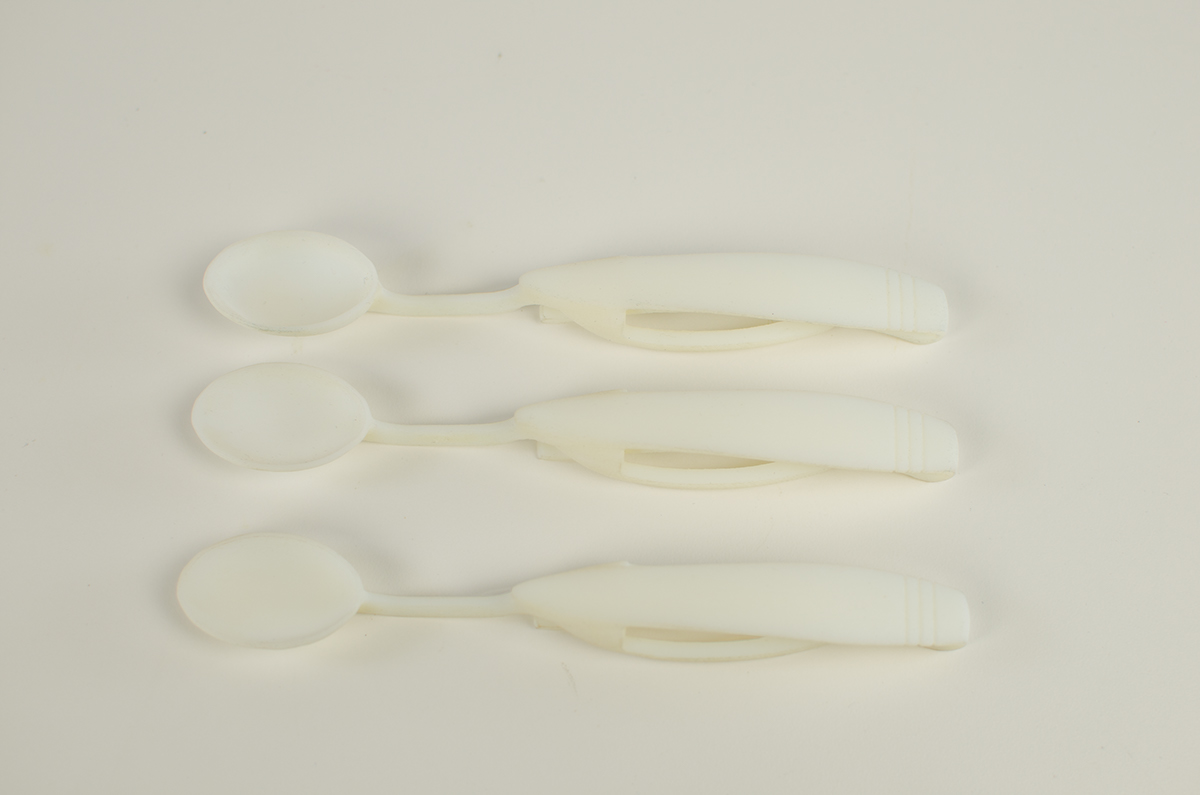
Our other design features a handle which can clip onto various objects, as well as featuring a curving, organic design. It also features three depths of spoon heads for different types of foods.
